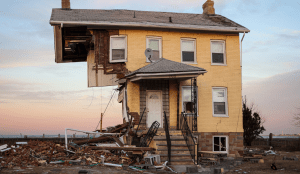iINVENTORYpro
Hurricanes
Hurricanes bring massive destruction to life and assets, including homes and property damage. While one thing to avoid the hazards faced by hurricanes includes preparing for them accordingly, another thing can be looked at to save your precious time and money.
For instance, if your house gets affected by a tornado or hurricane, you would look at property damage insurance. However, home insurance California takes a long time to proceed and give you your property damage liability insurance. In this case, you need the help of iINVENTORYpro to speed up the process and help you achieve your water damage insurance claim. Whatever documentation you need or inventory to move forward, we are here to provide it to you.
Hurricanes are large and extremely powerful and destructive weather systems. While many things can be included in hurricane preparation, one that will directly affect the insurance award you will receive for your insurance company with respect to your damage claim is the documentation you have to substantiate your personal property and the value of those items. This same type of documentation is crucial to your estate, and can effectively save substantial expenses as well as quickly and easily enhance life insurance claims.
FEMA recommends you complete your home inventory before a hurricane strikes. It simply makes sense to complete your home inventory when your personal property is readily available, intact, and in its undamaged condition.
After a hurricane hits, it can increase the time it takes to do the inventory required to submit your insurance claim by 20 to 50 times long than using iINVENTORYpro before the hurricane.
Taking advantage of the many features and benefits of iINVENTORYpro can help you to do it quickly and easily, and enable you to include pictures, videos, documents, reminders, multiple properties, and so much more!
Hurricane Category 1 Wind Speed: winds range from 74 to 95 mph
Hurricane Category 2 Wind Speed: winds range between 96 and 110 mph
Hurricane Category 3 Wind Speed: winds range from 111 to 129 mph
Hurricane Category 4 Wind Speed: winds range from 130 to 156 mph
Hurricane Category 5 Wind Speed: the highest category hurricane, winds are 157 mph or higher
* Hurricanes are measured using the Saffir-Simpson Hurricane Wind Scale, which runs from Category 1 up to Category 5. The wind speed scale was developed in the 1970s by Miami engineer Herbert Saffir and Robert Simpson, a meteorologist who was director of the National Hurricane Center. It only measures the wind speeds produced by a hurricane, but won’t tell you about the damaging flooding or tornadoes that might be included in the hurricane’s weather system.
Hurricane Katrina – 2005
2nd most damaging hurricane
Category: 3
Damage in 2005: $81 billion
Estimated damage today: $81 billion
Deaths 1,836
Hurricane Katrina was an extraordinarily powerful and deadly storm that carved a wide swath of catastrophic damage. Katrina was one of the deadliest and most destructive Atlantic hurricanes in U.S. history, with at least 1,836 fatalities and total property damage of approximately $81 billion.
Katrina first made landfall in southern Florida as a category 1 hurricane, causing some damage and fatalities. The storm increased to Category 5 after entering the warm waters of the Gulf of Mexico, but weakened to Category 3 before making landfall on the Gulf Coast. Despite its category, the location of the landfall along the low-lying Mississippi and Louisiana coastlines made for staggering destruction and loss of life.
Why Number 2?
Although Katrina was labeled the most destructive hurricane when it struck in 2005, it is ranked as second after normalizing it and other major hurricanes based on current conditions. Because the Great Miami Hurricane of 1926 traveled through the heart of Miami as a category 4 storm, its damage level would have been nearly double that of Hurricane Katrina.
The Great Miami Hurricane – 1926
Most Damaging Hurricane on Record
Category: 4
Damage in 1926: $105 million
Estimated damage today: $157 billion
Deaths: 372
The Great Miami Hurricane was a category 4 storm when it struck Miami on September 18th of 1926, virtually destroying the city. Storm tides in Miami ranged from 7.5 to 11.7 feet. At Miami Beach the tides ranged from 10.6 feet on the ocean side and 6.4 feet on the bay side. The hurricane also caused significant damage in the Florida panhandle, Alabama, and the Bahamas. Deaths from the hurricane totaled 372, with damage estimated at $105 million.
What would happen if this storm hit today?
The National Oceanic and Atmospheric Administration has rated the Great Miami storm as the most damaging U.S. Atlantic hurricane of all time. If an identical storm had occurred in 2005, damage would have totaled $178 billion, nearly double the damage caused by Katrina.
NOTE: Hurricane Sandy was not included in this review of Hurricanes.


